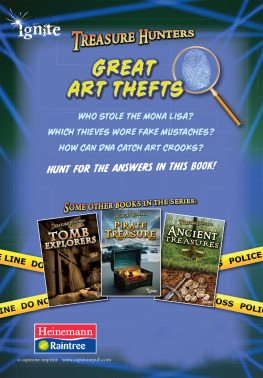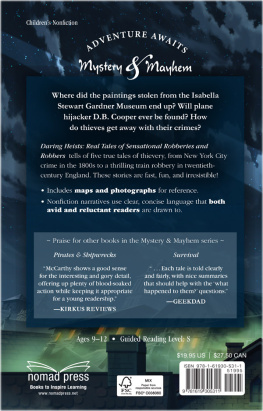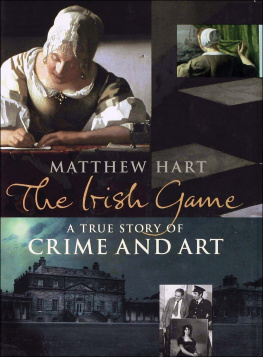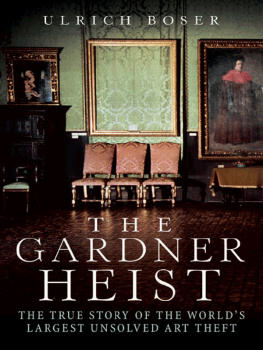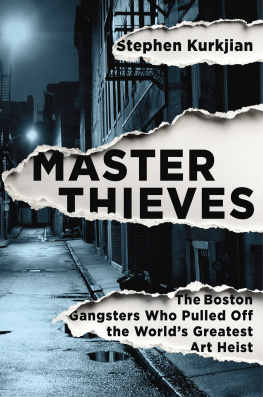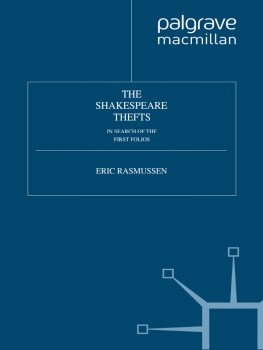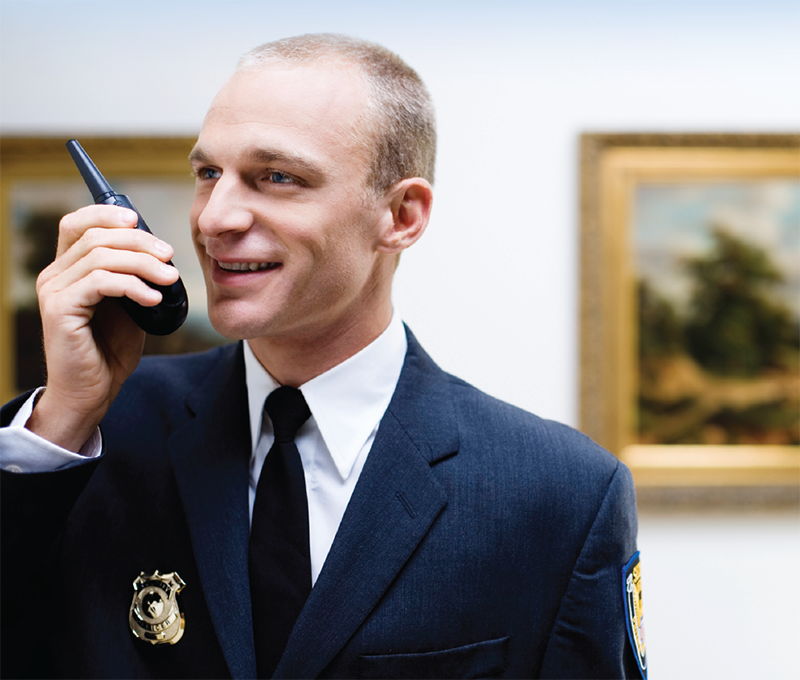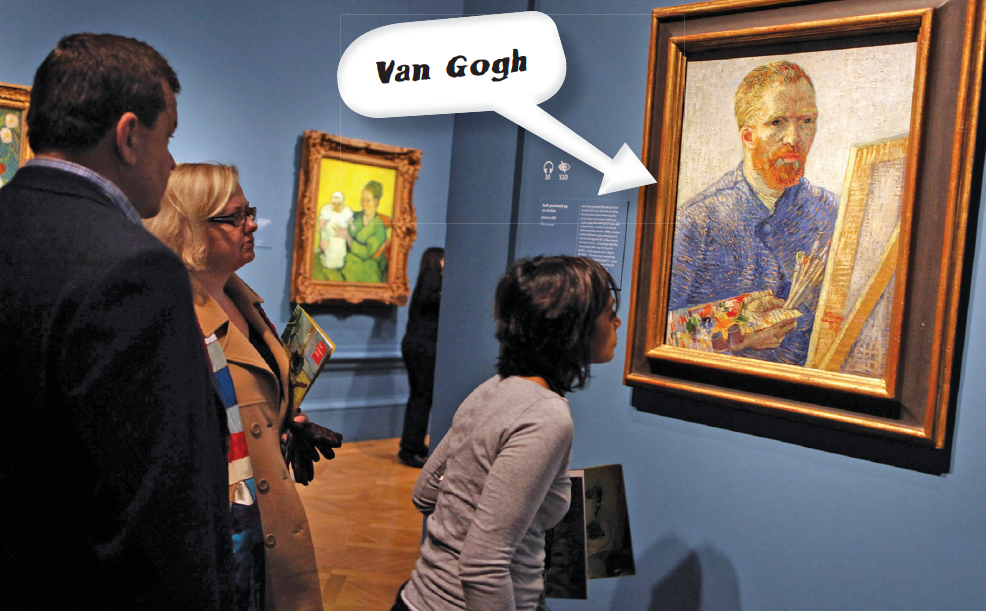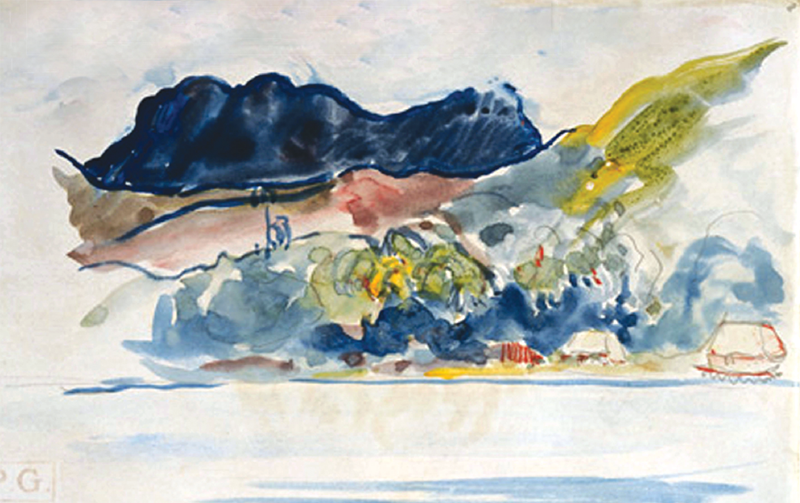c. 15031519
Leonardo da Vinci paints the Mona Lisa.
FIND OUT MORE
BOOKS
Boser, Ulrich. The Gardner Heist: The True Story of the Worlds Largest UnsolvedArt Theft . New York: HarperCollins, 2009.
Cumming, Robert. Art (Eyewitness Companions). New York: Dorling Kindersley, 2005.
Dickins, Rosie, and Mari Griffith. The Usbourne Introduction to Art . Tulsa, Okla.:EDC, 2004.
McShane, Thomas, and Dary Matera. The Stolen Masterpiece Tracker: Memoirs of theFBIs Leading Undercover Art Sleuth . Fort Lee, N.J.: Barricade, 2006.
Parks, Peggy J. Impressionism (Eye on Art). Detroit: Lucent, 2007.
Sassoon, Donald. Becoming Mona Lisa: The Making of a Global Icon. San Diego: Harcourt,2002.
WEB SITES
www.artloss.com
Visit the Art Loss Registers web site to find out more about theirwork.
www.ashmolean.org
Find out more about works of art at the Ashmolean Museum on thisweb site.
www.fbi.gov/about-us/investigate/vc_majorthefts/arttheft/
This FBI web site offersa lot of information about art theft, including its list of the top 10 art crimes.
www.gardnermuseum.org
This web site will tell you more about the Isabella StewartGardner Museum and includes information about the 1990 theft in its Resources section.
www.louvre.fr/en
Visit the official web site of the Louvre in Paris to find out moreabout the Mona Lisa and the many other priceless works of art in the museum.
www.munch.museum.no/content.aspx?id=151&mid=&lang=en
Visit this section ofthe Munch Museum web site to see how art experts have tried to repair the damagedone to The Scream and The Madonna after the 2004 theft.
PLACES TO VISIT
The Ashmolean Museum
Beaumont Street
Oxford
OX1 2PH
United Kingdom
The Isabella Stewart Gardner Museum
280 The Fenway
Boston, Massachusetts 02115
United States
The Louvre Museum
75058 Paris
France
The Munch Museum
Tyengata
53
0578 Oslo
Norway
The Van Gogh Museum
Paulus Potterstraat 7
Amsterdam
The Netherlands
TOPICS FOR FURTHER RESEARCH
Find out about another famous art theft that is not described in this book. How didthe thieves manage to steal the work of art? Has the art been found and, if so, whattechniques did detectives use to trace it?
Visit an art museum or gallery where you live and look at the security that is inplace to protect the artwork. Do you think the museum could do more to protect itsart?
Choose one of the artists mentioned in this book and find out more about his or herlife and works. Why do you think the artists work is worth so much money today?

VALUABLE BUT VULNERABLE
Have you ever visited a museum or gallery to see a famous work of art? Or maybe youhave heard of paintings such as the Mona Lisa , which are known around the world?What makes these paintings so special?
Many famous artists did not make much money when they were alive. But sometimes certainpainters or sculptors work can become very well known and valuable. Museums andcollectors will pay millions of dollars for a single work of art.
Most museums and galleries hire security guards to protect the works of art.
LOOK, BUT DONT TOUCH!
How can galleries protect pictures hanging on the wall?
- Guards often stand near valuable art.
- Security cameras and alarms alert museums if a robbery is taking place.
- The frames around paintings can be bolted to the wall so they are hard to remove.
But even with these security measures, a painting can be easy to steal! It is rightin front of the thief. Paintings dont weigh much once they have been cut out ofa frame, so they are easy to transport and hide.
Large, heavy works of art, such as sculptures, can be stolen, too. In 2011, a bronzesculpture by Barbara Hepworth worth $800,000 was stolen from a park in London, England.Police think the thieves wanted to melt it down and sell the metal.
In 1991, armed thieves stole 20 paintings from the Van Gogh Museum in Amsterdam,in the Netherlands. Nobody knew who the robbers were or why they stole the paintings.But the biggest mystery was why they left all of the stolen artwork behind in anabandoned car!
WHY STEAL ART?
Obviously, many thieves steal art because it can be worth so much money. But in someunusual cases, thieves take art for other reasons. Some robberies take place justto show how bad a gallerys security system is!
In 2003, thieves stole paintings worth over $6 million from a gallery in Manchester,England. But the art was left in a cardboard tube in a public restroom for the policeto find. A note from the thieves said, The intention was not to steal, only to highlightthe woeful security!
This painting by Paul Gauguin was one of three stolen in the 2003 robbery.
STOLEN ART FOR SALE?
It might be easy for a professional thief to steal valuable art, but it is not soeasy to sell it. Databases on the Internet alert galleries and law-abiding collectorsaround the world so they know if art has been stolen. Some art thieves make moneyout of the stolen works by holding them for ransom. They demand money from the galleryor owner in order for the art to be returned safely. Sometimes stolen art is usedby criminal gangs to make deals and loans with other criminals.

